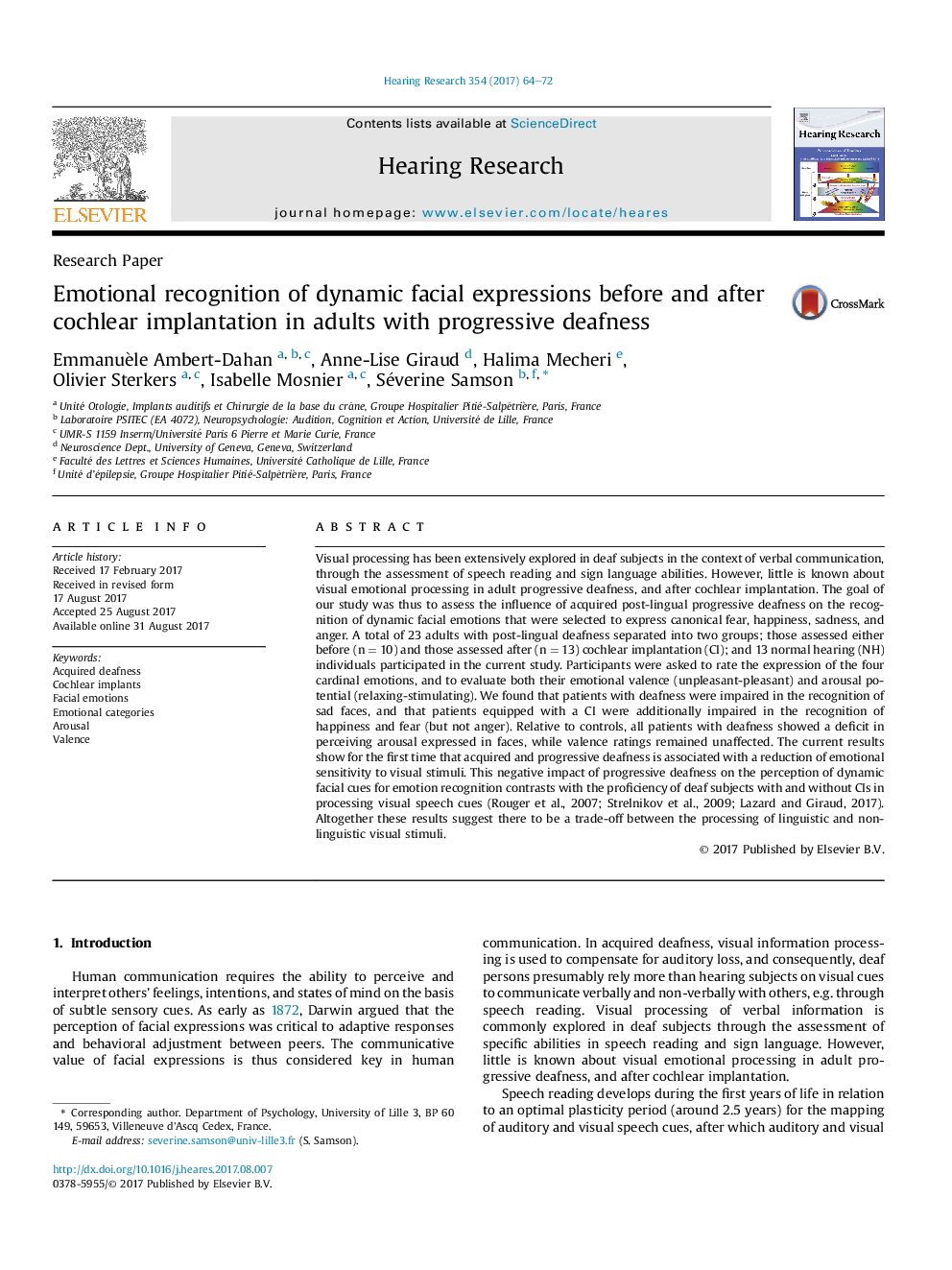| Article ID | Journal | Published Year | Pages | File Type |
|---|---|---|---|---|
| 5739310 | Hearing Research | 2017 | 9 Pages |
â¢Judgments of dynamic facial emotions are examined in adults with progressive deafness.â¢Pre and Post-CI subjects are not uniformly impaired in judging emotions in faces.â¢Findings suggest a negative impact of hearing loss on facial emotion's perception.â¢CI users might focus more on verbal cues and pay less attention to non-verbal cues.â¢This compensatory strategy could contribute to an emotional sensitivity degradation.
Visual processing has been extensively explored in deaf subjects in the context of verbal communication, through the assessment of speech reading and sign language abilities. However, little is known about visual emotional processing in adult progressive deafness, and after cochlear implantation. The goal of our study was thus to assess the influence of acquired post-lingual progressive deafness on the recognition of dynamic facial emotions that were selected to express canonical fear, happiness, sadness, and anger. A total of 23 adults with post-lingual deafness separated into two groups; those assessed either before (n = 10) and those assessed after (n = 13) cochlear implantation (CI); and 13 normal hearing (NH) individuals participated in the current study. Participants were asked to rate the expression of the four cardinal emotions, and to evaluate both their emotional valence (unpleasant-pleasant) and arousal potential (relaxing-stimulating). We found that patients with deafness were impaired in the recognition of sad faces, and that patients equipped with a CI were additionally impaired in the recognition of happiness and fear (but not anger). Relative to controls, all patients with deafness showed a deficit in perceiving arousal expressed in faces, while valence ratings remained unaffected. The current results show for the first time that acquired and progressive deafness is associated with a reduction of emotional sensitivity to visual stimuli. This negative impact of progressive deafness on the perception of dynamic facial cues for emotion recognition contrasts with the proficiency of deaf subjects with and without CIs in processing visual speech cues (Rouger et al., 2007; Strelnikov et al., 2009; Lazard and Giraud, 2017). Altogether these results suggest there to be a trade-off between the processing of linguistic and non-linguistic visual stimuli.
